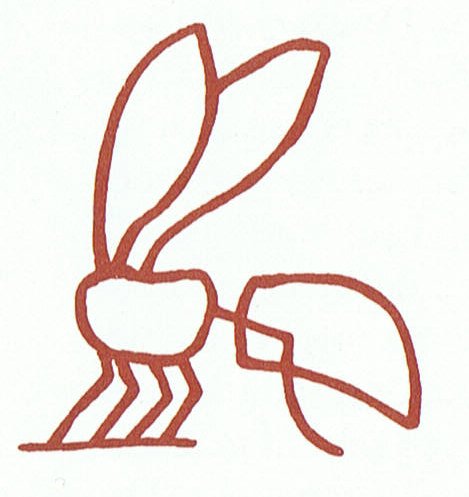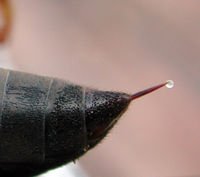|
TRANSLATIONS
Much becomes understandable in light of the tree of life (which then of course also becomes the tree of knowledge). Question marks disappear. For instance the strange fact that manu rere covers not only birds but also flying insects. ... However, one of our group, Harriet Gillett, a retired physician and an inveterate bird-watcher, had other interests. She noticed a nearby tree hevy with white blossoms and surrounded by a raucous sphere of birds and bees. She climbed out of the van with her binoculars around her neck, and walked over to take advantage of the unexpected opportunity the morning had provided. Our local guide, Francisco Florián, who knew the forest and its creatures in an unusually intimate way, joined her, explaining that the birds came to the tree only early in the morning. The sounds and the odd sight finally drew my attention and I too disembarked from the van and edged closer to the buzzing center of the action. I stared at the screaming birds as they fought for positions among the flowers and the hovering drone of thousands of bees. How beautiful, I thought, and then my gaze happened to settle on the trunk of the tree. It had thorns and it bulged just above the ground. It was a young ceiba tree ... If some Polynesians had seen such scenes, if they once had been in contact with the American continent and had seen birds like the small brilliant colibris, no greater than insects, they certainly would have reason to think of flying insects and flying birds as being in the same general category, fulfilling the same role in the cycle of life. What were they doing up there in the tree? They visited the flowers and left something, something hardly tangible but necessary for new life - just as the spit from the dry skull of One Hunaphu. They must have left the souls of the dead in care of the flowers. The fig wasps in ancient Egypt also ascertained the reappearance of new 'fruits' (hua). ... Wilkinson: 'In spite of the positive associations and beneficient usefulness it was still an insect which could sting. In the pictures, as well as in hieroglyphic writing, they had often, therefore, systematically deleted the head of the insect to make the picture harmless ...'
I think this was a stupid remark. Everyone knows that the sting of an insect is located at the other end of its body. The sting may still be there in the picture... Instead, the probable meaning of the loss of its head is that the 'wasp' must die inside the fig in order for a proper growth. That is necessary. '... The fig fruit is in fact an enclosed inflorescence, sometimes referred to as a syconium, an urn-like structure lined on the inside with the fig's tiny flowers. The unique fig pollination system, involving tiny, highly specific wasps, know as fig wasps that enter these closed inflorescences to both pollinate and lay their own eggs, has been a constant source of inspiration and wonder to biologists ...' It is remarkable to find the similarity between a ceiba thorn and the hind part of a wasp:
To get life you have to accept death. In 'From Honey to Ashes' there is not the slightest remark anywhere about the cosmic significance, everything revolves around abstract structures and human sociology. Obviously - I now understand - the bee is associated with Tzec because it is the month when sun reappears. What better symbol for the sun than the golden life-giving honey fluid? With ashes at the end of the day honey must come at the beginning.
In Saturday manu rere could be the soul of the dead week, I imagine:
And in Thursday, the day of thunder and lightning, another night is ending in a kind of kava ceremony - presumbably leaving its soul moving upwards:
Also in Sunday life in death apparently is illustrated (notice 9-19):
|













